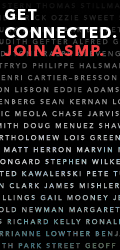
Business Resources
Intro
Why you need releases
A release is a written agreement between you and the person you are photographing, or the person who owns the property you are photographing. The purpose of the release is to protect you from any future lawsuits the person might file for claims such as defamation and invasion of privacy.
Get the ASMP Release App
A "must have" for professional photographers working in all genres of the business, this free app allows you to take a photograph of the subject, customize the release for the specific use of the images, sign the release and email it as a PDF to photographer, agent, model and client. More info, tech support & download links.
A model release says the person being photographed has given consent to be photographed and to the use of the images you capture. It doesn’t just apply to professional models or situations where people know they are posing for photos. You should seek to get a signed model release any time that your photos contain recognizable images of people, unless you are certain that you will never want to use them for anything other than editorial purposes.
A property release says that the owner of a certain property, such as a pet or a building, has given you consent to take and use images of the property. You don’t need one for public property, such as government buildings (although you may run into problems just from photographing them, for security reasons). But for images of private property — and particularly of objects that are closely identified with specific people — you are safer if you get a release.
The releases you obtain should be saved forever and should be linked in some way with the photographs to which they relate. You can expect to be asked to produce them whenever you license an image, and you will need them if you ever have to defend yourself in court.
The Right of Privacy
Although the laws of the 50 states vary, all states recognize that individuals have a right to be let alone in their daily lives and that harm (in the form of embarrassment, scorn or loss of status) can result if that right is violated.
However, the right of privacy is not absolute. In particular, the courts have long held that news reporting and social, political and economic commentary — the things the First Amendment was designed to protect — are more valuable to society than an individual’s right to be let alone. Therefore, images that are part of the public colloquy about events have usually been exempt from privacy lawsuits. In contrast, the courts have generally held that making money is distinctly less valuable to society than the right to be let alone.
Thus, privacy issues typically arise when an image is used for purposes of trade or advertising. That is, it’s not the picture, but how it is used that determines the need for a release. For instance, an image that is printed in a newspaper, shown in an exhibition or reproduced in a book might well be immune from a privacy suit. But the commercial sale of coffee mugs or t-shirts with the same image would probably not enjoy such protection. An advertisement almost certainly would not be immune.
Therefore, if you are on an advertising assignment, you will need to collect releases from every person in your shots. News assignments are a little trickier. You are always better off if you have permission to photograph your subjects and can prove it. But it’s not always possible to get permission and, in the U.S., you can report the news without it. Lacking a release, however, you are limited in how you can license the image later on.
These days, even editorial clients are requiring releases — and releases using their specific forms — with more and more frequency, so you need to check the terms of your agreements with your clients and stock houses to see what is required.
The Right of Publicity
In an increasing number of states (California in particular), a famous individual has an additional “right of publicity”: the right to control how his fame can be exploited for commercial purposes. Unlike rights of privacy, which die with the persons to whom they belong, rights of publicity survive their owners and can be passed along for generations. Rights of publicity also tend to be more specific in their prohibitions than rights of privacy.
Attorney Andrew Berger offers a more in-depth explanation of this right, with examples, on the Editorial Photographers web site.
For photographers and their clients, the right of publicity can become a problem when people become celebrities after you have taken their picture. It can especially be a problem with crowd scenes.
Defamation
A defamation lawsuit alleges that a person has been portrayed falsely or maliciously in such a way as to damage his reputation. (The term “defamation” includes both slander, which is spoken, and libel, which is published in some tangible medium.) The falsity may be direct, such as by compositing several images to depict a scene that did not happen, or indirect, such as advertising a rehabilitation clinic with a picture of someone who has never been a patient there. As always, there is a distinction between commercial use and editorial use, with commercial uses being held to stricter standards of truthfulness.
Property owners’ rights
Privacy and defamation cannot apply to objects (although defamation can apply to business entities). Things — cars, buildings, statuary, costumes, animals, etc. — don’t have legal rights. But the people who are closely associated with those objects do have rights and could claim that your photo of their property has caused harm. This is a tricky area of law, with few precedents to guide us. We discuss property releases in more detail on a separate page. In general, though, we advocate following the cautious rule, “When in doubt, try to get a release.”
Why we take this seriously
Most of the time, you take your pictures, everybody gets paid and that’s the end of it. Once in a while, though, things can go very wrong.
An article in the Los Angeles Times for Feb. 1, 2005 (no longer available online) described how Nestlé got slapped with a $15 million jury award because it used a model’s picture without taking care of the paperwork. In this case, there was no blame on the photographer; rather, the client (Nestlé) was accused of failing to pay all the fees that were specified in the model’s contract. But the size of the verdict shows that juries do take model’s rights very seriously.
The passage of time doesn’t necessarily reduce your risk. In the Nov. 22, 1999, edition of the New York Observer, an article relates that Peter Beard was threatened with a lawsuit for a photo he’d taken a dozen years earlier. In 1987, Beard had photographed a 17-year-old girl near Lake Rudolph in Kenya. But by 1997, that girl had moved to Los Angeles, where she was waiting tables and looking for work as a model. A New York friend called to tell her that a SoHo gallery was selling her picture for thousands of dollars. She reacted by hiring a lawyer and demanding $50,000 plus 15 percent of Beard’s sales. (It appears that the matter was settled out of court, so we don’t know what really happened.)
Where to go next
Before using these forms, be sure to look over our discussion of two 21st century worries: digital image manipulation and people’s heightened awareness of socially sensitive topics.
Next: 21st Century Worries: Digital Editing, Sensitive Subjects
Property and Model Releases
- 21st Century Worries: Digital Editing, Sensitive Subjects
- Using property releases
- What's in a release (the language of law)
- Ideas for getting signatures
- Frequently asked questions about releases
- Frequently asked questions about privacy and libel
- Which form to use
- Adult's model release
- Model release for a minor child
- Pocket model release
- Simplified model release
- Photographer's Portfolio Release
- Property release
Recommended links
- Casino Utan Svensk Licens
- Migliori Casino Online
- Casino Italiani Non Aams
- Gambling Sites Not On Gamstop
- Casinos Not On Gamstop
- Non Gamstop Casino
- Betting Sites Not On Gamstop UK
- Non Gamstop Casino Sites UK
- Meilleur Casino En Ligne
- Gambling Sites Not On Gamstop
- UK Casino Not On Gamstop
- Casino Not On Gamstop
- 信用 できるオンラインカジノ
- UK Casino Sites
- Non Gamstop Casino
- Non Gamstop Casinos
- Casino En Ligne
- Casino Sites Not On Gamstop
- Casino Zonder Cruks
- Non Gamstop Casino Sites UK
- UK Casinos Not On Gamstop
- Migliori Casino Non Aams
- Non Gamstop Casino UK
- Migliori Nuovi Casino Online
- Crypto Casino
- Paris Foot Belgique
- Bookmaker Italia
- Meilleur Site De Casino En Ligne
- Casino En Ligne Nouveau
© 2016 American Society of Media Photographers, Colorado chapter
Site problems? Contact the webmaster.






